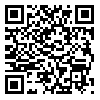Volume 12, Issue 4 (2015)
ioh 2015, 12(4): 1-10 |
Back to browse issues page
Download citation:
BibTeX | RIS | EndNote | Medlars | ProCite | Reference Manager | RefWorks
Send citation to:



BibTeX | RIS | EndNote | Medlars | ProCite | Reference Manager | RefWorks
Send citation to:
Hoveizi F, Ghasemkhani M. Determination and comparison of TWL and WBGT thermal stress indices of an onshore drilling rig workers in Ahvaz. ioh 2015; 12 (4) :1-10
URL: http://ioh.iums.ac.ir/article-1-1425-en.html
URL: http://ioh.iums.ac.ir/article-1-1425-en.html
Department of Occupational Health Engineering, School of Public Health, Tehran University of Medical Sciences, Tehran, Iran , ghasemkh@tums.ac.ir
Abstract: (6585 Views)
Background and aims: Health hazards under heat stress conditions are well known and many industrial workers expose to heat stressful environments. Protection of the health of workers with suitable productivity is very important the idea requires adoption of a heat stress index that is both reliable and easy to use. Recent studies have found that Thermal Work Limit (TWL) performs better than Wet Bulb Globe Temperature (WBGT) as a predictor of the impact of environmental heat stress. The aims of this study was to evaluate the heat stress level using TWL and WBGT in indoor and outdoor work environments, as well as to identify the correlation between the values of indices in order to determine the optimal index.
Methods: The study was undertaken in June 2014 on an onshore drilling rig workers (21 subjects) as indoor group and administrative personnel (31 subjects) as outdoor group of National Iranian Drilling Company (NIDC) located in Ahvaz. Both TWL and WBGT were used to assess the thermal stress at the beginning, middle and end of the shift over 3 consecutive days. All analyses were performed using SPSS version 18.
Results: Based on TWL and WBGT values no significant thermal stress was identified in the indoor working group, but in the outdoor group, the TWL shown different evaluation compared to WBGT. There was significant correlation between the indices at all three shifts in both groups (p<0.05).
Conclusion: WBGT values exceeded of TLV, whereas no case of heat illness was reported during 3 days of the study among the outdoor group. Therefore, the TWL has been shown to be more realistic index than WBGT which was found to be too conservative and inappropriate.
Methods: The study was undertaken in June 2014 on an onshore drilling rig workers (21 subjects) as indoor group and administrative personnel (31 subjects) as outdoor group of National Iranian Drilling Company (NIDC) located in Ahvaz. Both TWL and WBGT were used to assess the thermal stress at the beginning, middle and end of the shift over 3 consecutive days. All analyses were performed using SPSS version 18.
Results: Based on TWL and WBGT values no significant thermal stress was identified in the indoor working group, but in the outdoor group, the TWL shown different evaluation compared to WBGT. There was significant correlation between the indices at all three shifts in both groups (p<0.05).
Conclusion: WBGT values exceeded of TLV, whereas no case of heat illness was reported during 3 days of the study among the outdoor group. Therefore, the TWL has been shown to be more realistic index than WBGT which was found to be too conservative and inappropriate.
Type of Study: Research |
Subject:
Physical agents at work
Received: 2015/01/17 | Accepted: 2015/05/20 | Published: 2015/10/4
Received: 2015/01/17 | Accepted: 2015/05/20 | Published: 2015/10/4
Send email to the article author
| Rights and permissions | |
 |
This work is licensed under a Creative Commons Attribution-NonCommercial 4.0 International License. |





